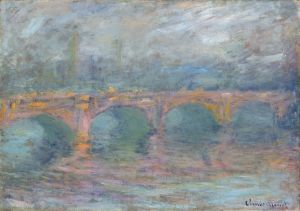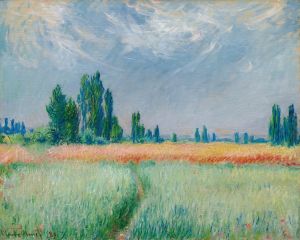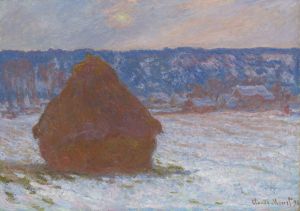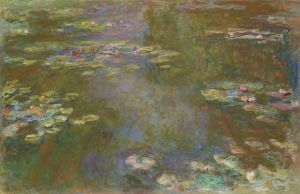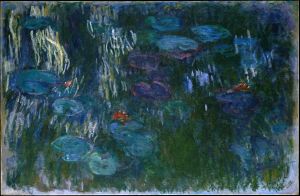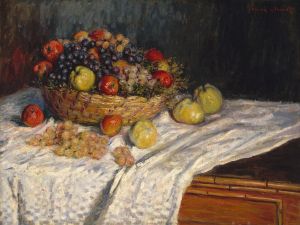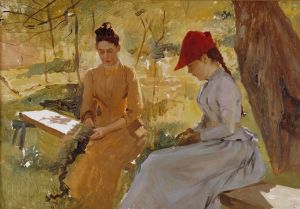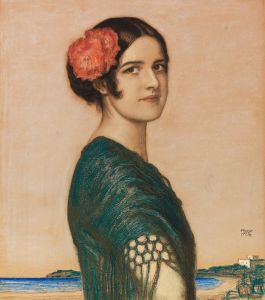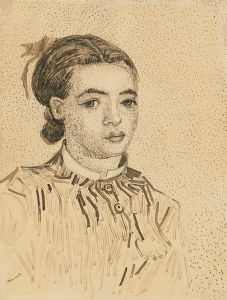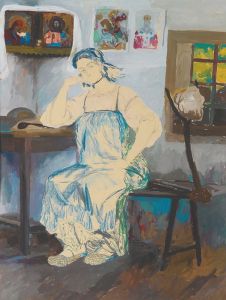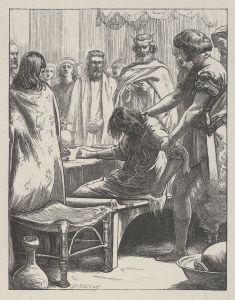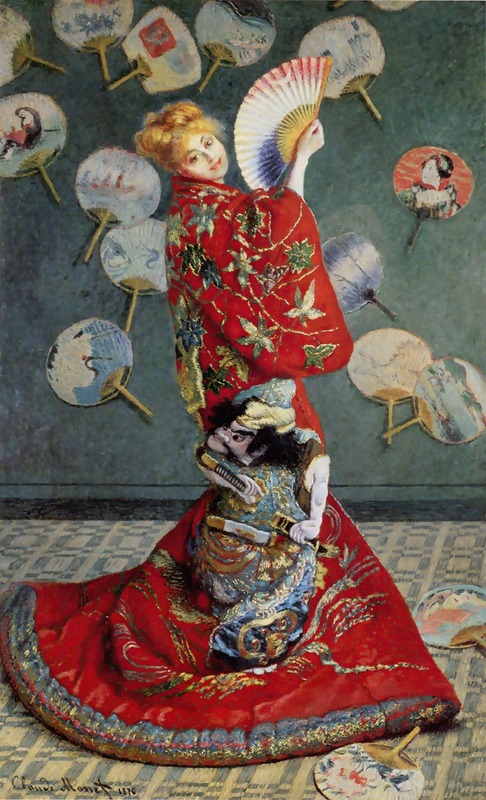
Camille Monet In Japanese Costume
A hand-painted replica of Claude Monet’s masterpiece Camille Monet In Japanese Costume, meticulously crafted by professional artists to capture the true essence of the original. Each piece is created with museum-quality canvas and rare mineral pigments, carefully painted by experienced artists with delicate brushstrokes and rich, layered colors to perfectly recreate the texture of the original artwork. Unlike machine-printed reproductions, this hand-painted version brings the painting to life, infused with the artist’s emotions and skill in every stroke. Whether for personal collection or home decoration, it instantly elevates the artistic atmosphere of any space.
"Camille Monet in Japanese Costume" is an oil painting created by the renowned French Impressionist artist Claude Monet in 1876. This artwork is part of a series of paintings Monet produced during the 1870s that reflect his fascination with Japanese art and culture, a trend known as Japonisme that swept through Europe in the late 19th century.
The painting features Monet's first wife, Camille Doncieux, dressed in a traditional Japanese kimono. She is depicted standing against a backdrop of Japanese fans, which are meticulously arranged to create a vibrant and decorative setting. The kimono is richly adorned with intricate patterns and bright colors, showcasing Monet’s interest in the exotic and the ornamental aspects of Japanese design. Camille's pose and the overall composition of the painting highlight the influence of Japanese woodblock prints, which were characterized by their bold outlines and flat areas of color.
Monet's interest in Japanese art was part of a broader cultural phenomenon in Europe, where artists and collectors were increasingly drawn to the aesthetics of Japanese prints and objects. This interest was fueled by the opening of Japan to the West in the mid-19th century, which led to an influx of Japanese goods into European markets. Monet himself was an avid collector of Japanese prints, and this influence is evident in the stylistic elements of "Camille Monet in Japanese Costume."
The painting is notable for its vibrant use of color and light, hallmarks of Monet's Impressionist style. The interplay of light and shadow on the fabric of the kimono and the reflective surfaces of the fans demonstrate Monet's skill in capturing the effects of light, a central concern of the Impressionist movement. The composition also reflects Monet's interest in exploring new and unconventional subjects, moving away from traditional European themes to embrace a more global perspective.
"Camille Monet in Japanese Costume" is housed in the Museum of Fine Arts in Boston, Massachusetts. It remains an important example of Monet's work during this period and offers insight into the cultural exchanges between East and West that influenced many artists of the time. The painting not only exemplifies Monet's technical prowess and artistic innovation but also serves as a testament to the cross-cultural interactions that enriched the art world in the 19th century.
This artwork is a significant piece within Monet's oeuvre, as it captures both his personal life and his artistic explorations. Camille Doncieux, who was Monet's muse and model for many of his early works, is immortalized in this painting, which combines personal intimacy with broader cultural themes. Through "Camille Monet in Japanese Costume," Monet contributes to the dialogue between Western and Eastern art, highlighting the ways in which different artistic traditions can intersect and inspire new creative expressions.






